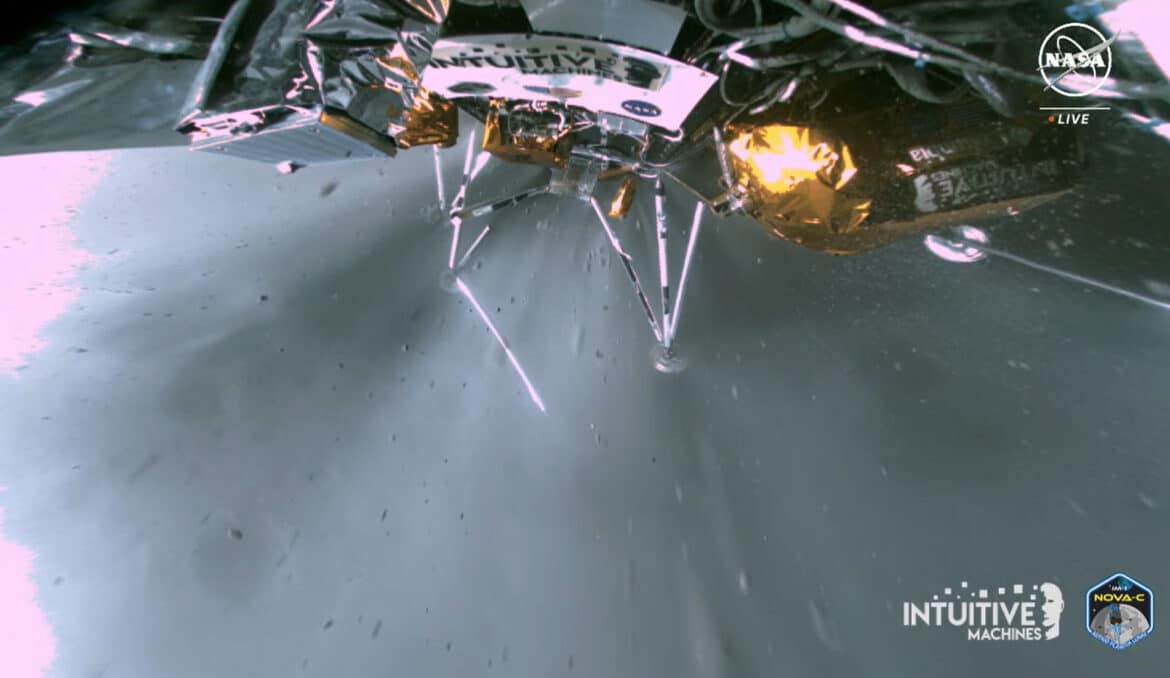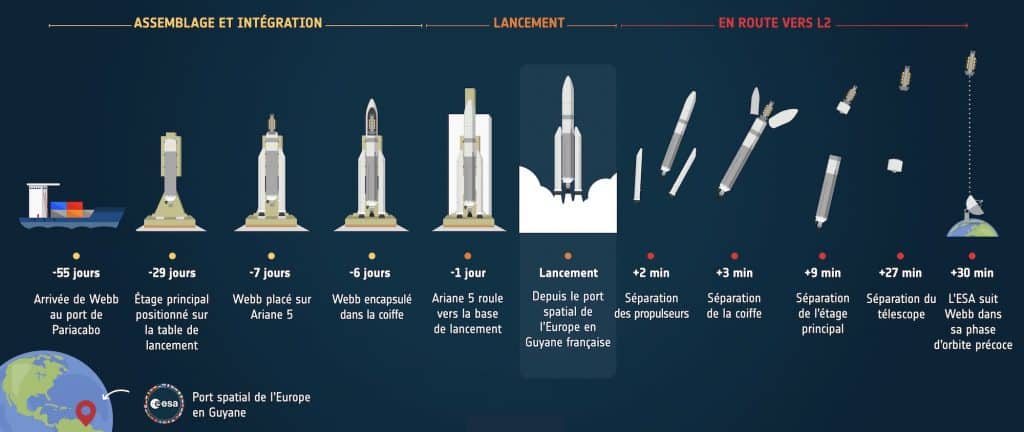
Share
Published on 08 December 2021
Equipped with a 6.5 m mirror, the James Webb Space Telescope (JWST) will revolutionise astronomy. Its launch on Ariane 5, its complex deployment and the commissioning of its instruments represent many technical challenges.

Presented as the successor of the Hubble space telescope, the James Webb Space Telescope (JWST) will not observe the universe in the visible field like its predecessor, but will focus on infrared. This wavelength will give it access to what happened 300 million years after the Big Bang, to the mechanisms of the birth and development of stars and the composition of the atmosphere of exoplanets, those distant worlds which orbit suns other than ours.
But before making potentially spectacular advances in these fields (the list is not exhaustive!) and turning its impressive 6.5 m mirror (a record for a space observatory) to the sky, the JWST must meet the series of challenges of its launch, its deployment and the commissioning of its instruments.
The JWST is an initiative of NASA which the European Space Agency (ESA) and the Canadian Space Agency (ASC or CSA) have joined. These agencies provide instruments in exchange for a percentage of observation time. Above all, the ESA’s participation also includes delivering the launch with Ariane 5 from the Guyanese Space Centre. After years of delay because of its complexity, Webb actually arrived at the European space port in October (NASA video below).
With JWST, the Ariane 5 launcher operated by Arianespace will carry its most costly payload since the total budget for this observatory is close to $10 billion (development, construction and operation over more than 20 years). After preparation on the ground of almost two months, which has already begun, the European launcher’s mission, from take-off to the release of the telescope, should last around thirty minutes (ESA’s diagram below). Blast-off is scheduled for 22 December 2021.
Once the 30 minutes of suspense related to the launch is over, the JWST will be released on a path which will enable it to reach the Lagrange Point, L2. This point of gravitational equilibrium at 1.5 million km from the Earth (at the other side from the Sun), offers the telescope an area where it will not be disturbed by our planet, particularly its heat. Indeed the JWST needs to be cold to observe the universe in infrared. That’s why it is also equipped with a “parasol” the size of a tennis court to shade it from our star’s rays. This shield and the 6.5 m mirror were too huge to go into a launcher’s capsule. So, the JWST will take off folded up and will have to spread out like an origami once in space: a complex sequence which will require two weeks for the most critical operations, namely the switch-on of the five layers of its parasol and the opening of its mirror. The video below summarises this incredible sequence where there is no room for error.
Just think that only for deploying the five-layer heat shield, more than 150 mechanisms will be at work!
The ESA diagram below offers another summary in images.
Once deployed, and one month after taking off from the Guyanese Space Centre, the JWST will place itself in what’s known as a halo orbit around the Lagrange Point, L2 (ESA diagram below).
This video animation shows the rationale for a halo orbit around L2.
You might think that the most difficult part is past for the ground teams in charge of the Webb. In fact, that won’t entirely be the case, because they will then have to commission the instruments and perfect the alignment of the telescope’s mirrors using little actuators, particularly the eighteen hexagons which make up its 6.5 m principal. The required precision will be of the order of 1/10,000th of the thickness of a human hair … The instruments aboard will undergo a calibration procedure to meet the performances expected by the astronomers. They must also be able to operate at temperatures below -230°C! About six months after its launch, the JWST will be ready for the scientific phase of its mission.